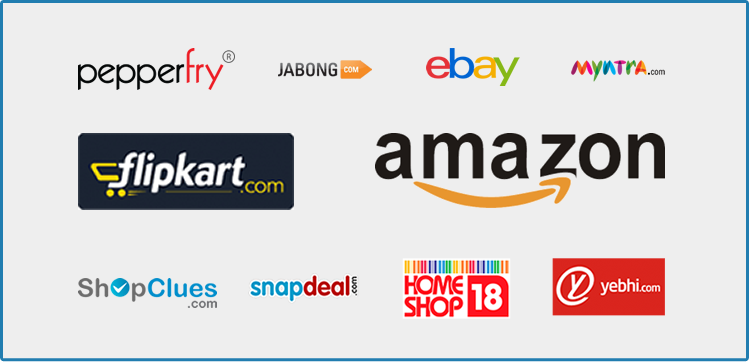by Jasmeet

In the last decade, the e-commerce industry globally has grown by leaps and bounds at an unprecedented rate. And even statistics prove so. According to the latest numbers released in March 2019 by United Nations Conference on Trade and Development, the global ecommerce sales grew 13% in 2017, hitting $29 trillion in revenues. The global market research company Euromonitor International’s report titled ‘What’s New in Retail: Emerging Global Concepts’ states that e-commerce is expected to become the largest retail channel in the world by 2025 and outpace its traditional peers.
Every business of every size and nature in both B2C and B2B segments has been riding on e-commerce wave, hoping to follow the footsteps of Amazon, Ali Baba, eBay, Zappos, Rakuten, Flipkart, IndiaMart, eWorldTrade and other online giants. However, the truth be told, this isn’t an easy task. It has taken years and years for the biggest e-commerce companies to reach where they are today.
There are literally billions of e-commerce companies in the world engaged in fierce competition. Being in the e-commerce industry is not only about survival but also about flourishing in a way that it consistently puts you at the top of mind of your customers and gives your competitors a run for their money.
Let’s first understand that e-commerce is not about simply about creating a website and displaying your products or services for customers. It takes humungous hard work in terms of money, time and efforts to make customers aware of the existence of your online business, drive them to your website, persuade them to buy and make them repeatedly return even after the first purchase. When your business is able to achieve this consistently over the years, it could truly be termed successful.
This brings us to the most pertinent question how to start e-commerce business in India?
Well, here are five simple tips that should get you started on the right track.
1.Define Your Brand and Unique Selling Proposition (USP)
When you think of Amazon, you think about a brand that sells everything and that too, at low prices. When you think of buying footwear, you think of Zappos. When you think of e- wallets, you think of Paytm. These e-commerce companies have created a loyal audience for themselves by defining the uniqueness of their brand. You need to do the same to become successful.
Before launching your e-commerce business, ask yourself these questions:
- Why do you want to be in this business?
- Why should someone buy from you?
- What makes your brand different from your competitors?
- What unique problem your brand is solving?
- Which is that one factor that emotionally connects customers to your brand?
- Are your products or services good enough to scale in future?
- Is the timing right for entering the e-commerce market?
The answers to these questions will enable you to define the purpose of your business, narrow down your target audience and design your marketing communication accordingly.
If you fail to define your brand and USP, you will be just another ‘me too’ brand trying to copy others without creating a distinguished identity for yourself in the market.
2.Design a Website to Create Impact
Your e-commerce website is the biggest and most tangible marketing asset for your business. 48% of online shoppers consider that a website’s design is the numero uno factor in evaluating the credibility of a business. It goes without saying that your business website design has to be perfect enough to provide a ‘wow’ user experience. A website can make a great impact if it includes the following elements:
- Informative
Every product listed on your website should be accompanied by detailed information regarding its uses and features along with high-quality product images. The website should also include details about the company, its management and team, location, shipping policies, FAQs, customer testimonials and all other information that can help visitors to make informed buying decisions.
- Interactive
An interactive website allows your customers to engage with your brand and do more than just plain browsing. Make sure your website has interactive features such as comments, chat, newsletter/email subscription button, contact us form, etc.
- User-Friendly Navigation
A website with poor navigation menu will result in customers leaving the website sooner without buying anything. Your website should have categories, sub-categories, labels and search bar that helps the visitors to switch from one page to another with ease. For example, if you are selling apparels, then the navigation should allow visitors to search by gender, age, price, top-selling, etc.
In navigation, it is also important that the website loads in less than five seconds and offers easy checkout or else bounce rate will increase.
- Visually Appealing
Your website should look attractive but have a simple, clean and minimalistic design in terms of colours and typography. The visual appeal should also be such that it reduces the website load time.
- Mobile Responsiveness
People are spending more time on their mobile devices than ever to browse and shop. Needless to say, your website should be optimized for mobile devices.
3.Use Digital Marketing Strategy to Drive Traffic
In order to get more conversions, you need more traffic on your website. This means that the target audience should be able to find your website from various sources such as search engines (Google, Yahoo, Bing, etc.) and social media platforms. Your website should have high visibility and search ability. The following digital marketing strategies can help you achieve that:
- You can run paid ad campaigns on Facebook, Instagram, Pinterest, Twitter or LinkedIn to target the customers based on their demographics, interests and behaviour.
- You can tie up with relevant influencers in your industry to promote your products on their social media handles. Influencers hold high credibility in the minds of their followers.
- You can leverage the power of content marketing by publishing interesting and useful content through blogs, videos, infographics, e-books, white papers and podcasts. These mediums also attract customers to your website.
- Send targeted and personalized emails to your subscribers on a regular basis informing them about new product launches and updates.
- You can, or rather you must definitely use Search Engine Optimization (SEO) tactics to get qualified traffic to your store. SEO is a cost-effective process which uses certain keywords to enhance the ranking of your website in the organic (non-paid) search engines . Higher the rank, higher the visibility and higher the traffic to your website. SEO also builds trust and credibility of your website.
4.Provide Exceptional Customer Service
No matter how good your products are or how low prices your offer, poor customer service can ruin your reputation and prevent customers from returning to your website. Customers expect a prompt resolution to their queries and grievances, timely shipments and deliveries and empathetic customer service representatives while dealing with e-commerce companies. Various studies have indicated that customers are ready to pay extra money for good services. Amazon Prime is a fine example of this. An exceptional and high-standard customer service experience goes a long way in creating successful businesses. So, make sure that:
- Customers can reach you 24/7 via emails, toll-free numbers, or chatbots.
- The turnaround time of services is as quick as possible, ideally less than 24 hours.
5.Engage Customers Continuously to Retain Them
Did you know that new customer acquisition is five times costlier than customer retention, and the probability of selling to an existing customer is 60-70% while that of selling to a new customer is 5-20%? This is the reason why customer engagement is the number one priority of successful e-commerce companies to retain existing customers. Some of the effective engagement strategies are:
- Interact with customers continuously and promptly on your social media accounts.
- Allow your customers to give feedback or leave comments on your website.
- Host giveaway contests and offer discounts/coupons.
- Offer loyalty programmes to customers to reward them for repeat purchases and encourage more purchases from you.
- Send automated emails for new signups, fresh purchases, follow-up for abandoned carts, product and promotion updates, etc.
While the above tips will definitely set you on the path of success, it is also necessary to reinvent the business, challenge outdated practices and embrace new trends in accordance with the changes in market dynamics and customer expectations.
 Jasmeet is an Entrepreneur, Avid Reader, Startup Consultant, and a Blogger at Lessons At Startup. A regular family guy and a proud father of two adorable Kids.
Jasmeet is an Entrepreneur, Avid Reader, Startup Consultant, and a Blogger at Lessons At Startup. A regular family guy and a proud father of two adorable Kids.


